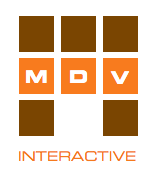
Published August 11, 2011 in the Colorado Springs Business Journal
I hope you all know what I’m referring to when I say “QR codes” – they’re those squiggly, square bar code thingies that are showing up on packages and in ads all over the place. The idea is that you hold your phone over this QR code (if you have a QR code reader app installed) and then you see a movie or commercial or Facebook page right on your phone without clicking, typing or screwing around.
So far, QR codes have been the killer technology for bringing the Web closer to reality. I mean sure, we can all type URLs into the browser on our phones, but this makes it a little bit easier. No typing, no squinting and editing the typing… just BAM here’s the Web thing-a-ma-gig we wanted to show you.
So why aren’t QR codes everywhere?
Once you start reading QR codes with your phone, it’s addicting and you will start looking for the QR code on everything you see. Sometimes I wish my husband had a QR code so I could tell what he’s thinking.
However, the biggest problem with QR codes (and I don’t say this lightly) is how they look. In order for a QR code to function correctly, it has to be printed in black without any background colors, and bordered by 1/4inch of white space. Try telling this to a graphic artist. Businesses are hesitant to put these oppressive-looking codes on their collateral in black and white because it’s a decision that puts functionality over graphic design, and functionality almost never wins. QR codes don’t look ‘fun,’ and they don’t convey brand.
Here’s what will replace QR codes-
Companies such as Layar Vision have built a system that responds the same way as a QR Code – where you scan something with your phone and the Web thing-a-ma-gig shows up instantly – but they’re able to do it without that weird looking code blob. With these new “enhanced reality” systems, businesses can simply upload an image to the Layar Vision servers, and then when users scan that image, the file starts downloading to their phones.
The implications for business are huge. Imagine attending a networking event where everyone’s face was scanned into the system and tied to their Twitter profile. From across the room, you could scan someone’s face, read their Twitter posts, and be ready to have a meaningful conversation when you introduce yourself.
Imagine the utility company, where the workers upload scans of every broken pipe in the system. Then, as the utility workers walk down the street, they will be able to see how many breaks happened in exact locations over time.
Restaurants can have scans on their placemats to deliver coupons or news about the restaurant. They can have customers vote on the next day’s special, or rate them instantly in GooglePlaces.
Imagine a Wikipedia getting in on this action…
Why?
The goal of QR codes and these “enhanced reality” systems is to make the Web part of the physical world by providing supplemental information (stored on the Web) to answer questions encountered in daily life. The Web wants to be that super smart friend you had in high school who could answer anything, and often piped up with supplemental information when you really weren’t asking for it.
It’s going to be a strange and overly-informed world out there. Get ready…
